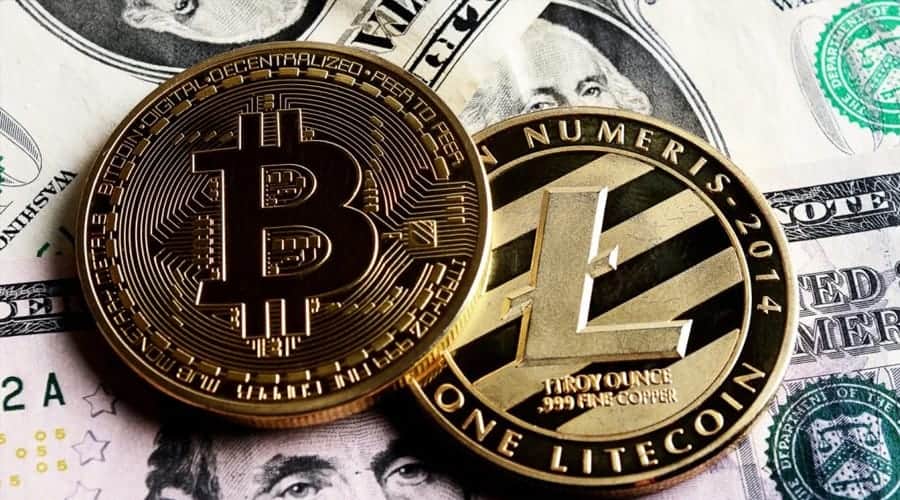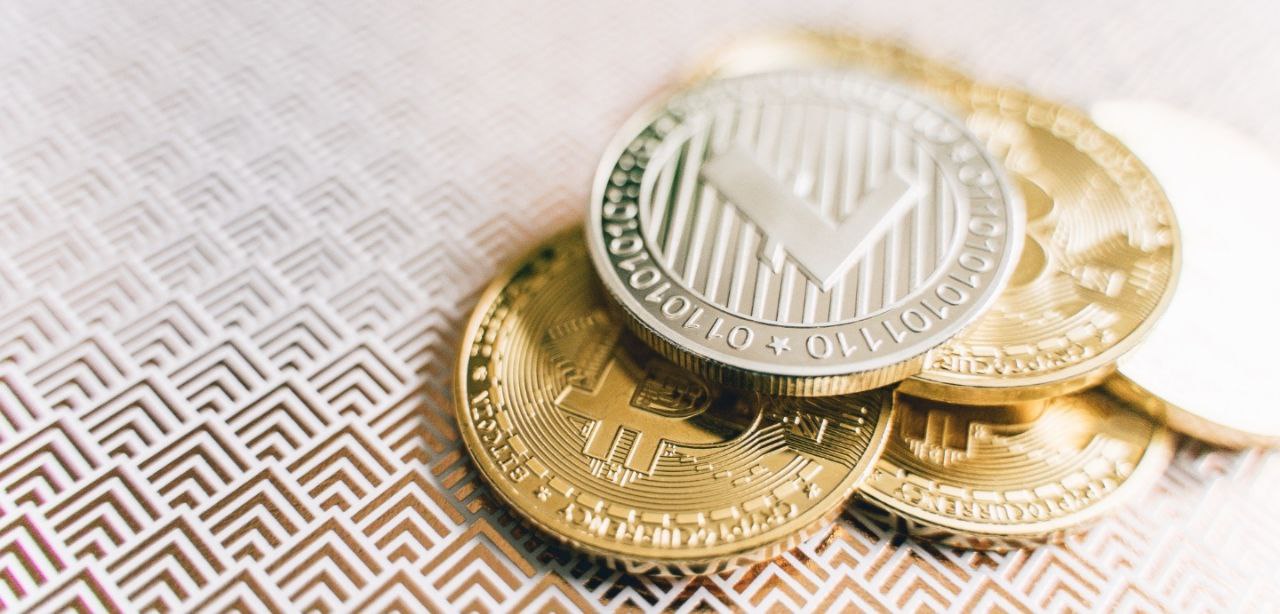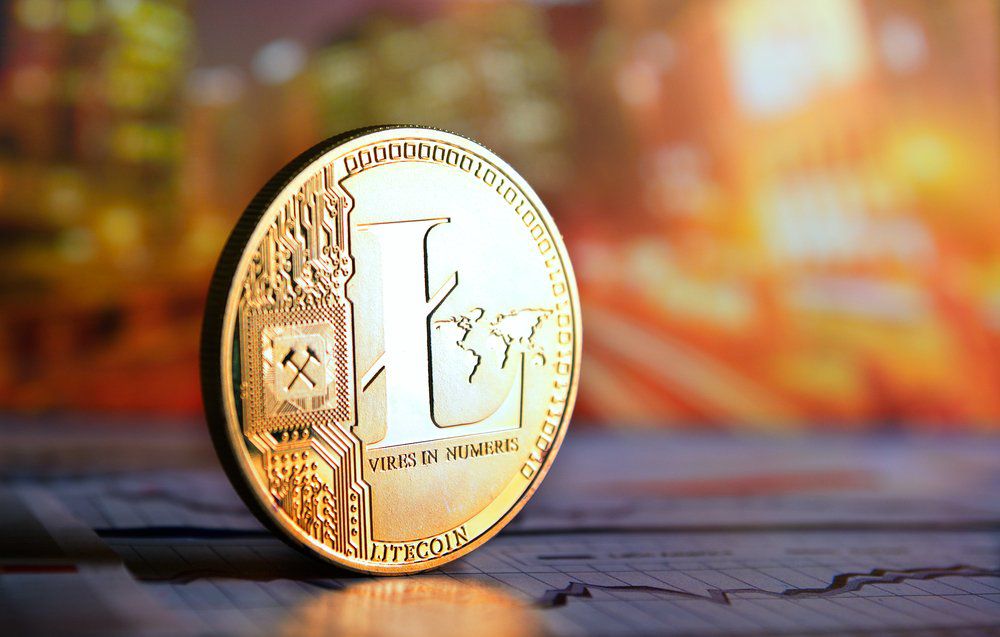Litecoin As A Bitcoin Alternative - Advantages And Limitations
If you're curious about digital money and how it works, you might have heard about something called Litecoin as a Bitcoin alternative. It's like a different kind of online money, but how is it similar to and different from Bitcoin?
Author:James PierceReviewer:Camilo WoodFeb 08, 20241.3K Shares65K Views

If you're curious about digital money and how it works, you might have heard about something called Litecoin as a Bitcoin alternative. It's like a different kind of online money, but how is it similar to and different from Bitcoin? Let's take a look at the good things and the not-so-easy parts of using Litecoin instead of Bitcoin.
What Is Litecoin (LTC)?
Litecoin (LTC) emerged in 2011 as a cryptocurrency stemming from a split in the Bitcoin blockchain. Its inception aimed to tackle growing concerns about Bitcoin's centralization and the dominance of large mining entities. Although it didn't entirely prevent the consolidation of mining power, Litecoin adapted into a mineable coin and a decentralized peer-to-peer payment network.
Understanding Litecoin (LTC)
Understanding Litecoin (LTC) entails grasping its origins, features, and position within the broader cryptocurrency landscape. Charlie Lee, a former Google engineer, developed Litecoin in October 2011 to complement Bitcoin and address some of its perceived drawbacks. Like Bitcoin, Litecoin operates on a decentralized blockchain network, utilizing cryptographic techniques for the security and validation of transactions. However, it distinguishes itself through several key attributes.
One fundamental aspect of Litecoin is its faster transaction times. The Litecoin network aims to process blocks approximately every 2.5 minutes, compared to Bitcoin's 10-minute block time. This shorter block time facilitates quicker confirmations of transactions, enhancing the overall efficiency of the network. Litecoin also boasts lower transaction fees than Bitcoin, making it more cost-effective for transferring value across the network.
Another notable feature of Litecoin is its mining algorithm. While Bitcoin relies on the SHA-256 algorithm for mining, Litecoin utilizes Scrypt. This choice was intentional, aiming to democratize the mining process and reduce the centralization of mining power seen in Bitcoin. The Scrypt algorithm is generally considered more accessible to individual miners using consumer-grade hardware, thus promoting a more decentralized network.
Litecoin also implemented Segregated Witness (SegWit), a protocol upgrade to improve transaction throughput and scalability. SegWit separates transaction signatures from transaction data, allowing more transactions to fit within a single block and alleviating network congestion. This upgrade enhances the overall efficiency of the Litecoin network and lays the groundwork for future developments.
Comparative Analysis - Litecoin Vs. Bitcoin
Segregated Witness (SegWit) adoption is another significant difference between the two cryptocurrencies. Litecoin was the first cryptocurrency to adopt SegWit, which improved its scalability and transaction throughput at the expense of transaction malleability. This update positions Litecoin as a more technologically advanced alternative to Bitcoin by increasing the network's efficiency and functionality.
One important area where Litecoin and Bitcoin differ from one another is the mining algorithm. Litecoin uses Scrypt for mining, while Bitcoin uses the SHA-256 algorithm. Because the Scrypt algorithm is more resistant to specialized mining hardware (ASICs) and permits participation from individual miners using consumer-grade hardware, it was purposefully chosen to encourage a more decentralized mining ecosystem. This choice is consistent with Litecoin's mission to maintain accessibility and decentralization throughout the mining process.
Another area of variation is transaction costs. Litecoin usually has lower transaction costs than Bitcoin because of its quicker block times and more effective transaction processing. Because of this, Litecoin is now more affordable for daily use cases, microtransactions, and smaller transactions. Because of its greater demand and user base, Bitcoin frequently has higher transaction fees when there is network congestion.
Throughput and transaction speed are two main areas of comparison. Litecoin provides faster transaction confirmations than Bitcoin due to its lower block period of roughly 2.5 minutes, as opposed to Bitcoin's 10-minute block time. As a result, Litecoin transactions execute more quickly, which makes it more suited for regular transactions where speed is crucial. In contrast, Bitcoin places greater emphasis on security and decentralization than speed, which may result in longer confirmation times but potentially stronger network security.
A side-by-side comparison of Bitcoin (BTC) and Litecoin (LTC) reveals the unique characteristics and subtle differences between these two well-known cryptocurrencies, offering an understanding of their advantages and disadvantages. Although Litecoin and Bitcoin both adhere to the fundamental blockchain technology concepts of decentralization, security, and transparency, they differ significantly in some areas.
Advantages Of Litecoin As A Bitcoin Alternative
When it comes to cryptocurrencies, Bitcoin is often the first name that comes to mind. However, there are numerous alternatives in the market, each with its unique features and advantages. One such alternative is Litecoin. While Litecoin shares many similarities with Bitcoin, it offers several distinct advantages that make it a compelling option for investors and users alike. Let's explore some of these advantages:
Faster Transaction Times
One of the key advantages of Litecoin over Bitcoin is its faster transaction times. Litecoin boasts a shorter block generation time of just 2.5 minutes compared to Bitcoin's 10 minutes. This means that transactions on the Litecoin network are confirmed more quickly, allowing users to send and receive funds with greater speed and efficiency. This swift transaction time makes Litecoin particularly well-suited for use in everyday transactions, such as retail purchases or peer-to-peer payments.
Lower Transaction Fees
In addition to faster transaction times, Litecoin also offers lower transaction fees compared to Bitcoin. This is partly due to Litecoin's larger block size limit, which allows for more transactions to be processed per block. As a result, users can enjoy lower fees when sending funds on the Litecoin network, making it a cost-effective option for transferring value across borders or conducting microtransactions.
Different Mining Algorithm - Scrypt Vs. SHA-256
While both Bitcoin and Litecoin rely on a decentralized network of miners to validate transactions and secure the network, they employ different mining algorithms. Bitcoin uses the SHA-256 algorithm, whereas Litecoin utilizes Scrypt. The Scrypt algorithm is designed to be more memory-intensive than SHA-256, which has several implications for miners.
One significant advantage of Scrypt is that it tends to be more resistant to the application-specific integrated circuits (ASICs) commonly used in Bitcoin mining. As a result, Litecoin mining is still accessible to a wider range of people, including those with consumer-grade hardware. This decentralization of mining power helps to promote a more democratic and resilient network.
Segregated Witness (SegWit) Implementation
Litecoin was one of the first major cryptocurrencies to implement Segregated Witness (SegWit), a protocol upgrade aimed at improving the scalability and efficiency of the blockchain. SegWit separates transaction signatures (witness data) from the transaction data, allowing for more transactions to be included in each block without increasing the block size.
By implementing SegWit, Litecoin has been able to increase its transaction throughput and reduce fees even further. Additionally, SegWit lays the groundwork for future innovations such as the Lightning Network, which promises to enable instantaneous and low-cost transactions off-chain.
Challenges And Limitations
Although Litecoin (LTC) has many benefits and is a formidable rival to Bitcoin (BTC), it also has several drawbacks and restrictions in the cryptocurrency market. Comprehending these hindrances offers a valuable understanding of the domains in which Litecoin can face challenges or possible disappointments
Being able to set itself apart from Bitcoin is one of Litecoin's biggest challenges. Even though Litecoin has a distinct mining algorithm, cheaper fees, and faster transaction times than Bitcoin, some onlookers might only see it as a copy or derivative of Bitcoin. It will take smart branding, marketing initiatives, and continuous development of standout features and use cases to change this view and establish Litecoin as a valued and distinct cryptocurrency in and of itself.
Like many blockchain networks, Litecoin also faces the difficulty of scalability. Litecoin has adopted Segregated Witness (SegWit) to increase scalability and transaction throughput; however, additional improvements would be necessary to meet rising demand and maintain network efficiency. Implementing solutions that strike a balance between performance, security, and decentralization necessitates continuous study, development, and cooperation among stakeholders in order to address scaling challenges.
Litecoin faces further challenges in the form of market adoption and integration. Although Litecoin has becoming more popular as a store of value and a medium of exchange, retailers, companies, and financial institutions have yet to widely accept it. To build a strong ecosystem that facilitates the use of Litecoin in daily transactions and financial services, cooperation, education, and infrastructure development are necessary to overcome adoption barriers like regulatory uncertainty, technological complexity, and consumer preferences.
One of the biggest concerns for cryptocurrency networks, like Litecoin, is security. Despite the fact that Litecoin gains from the built-in security features of blockchain technology, it is still susceptible to attacks, exploits, and vulnerabilities. Maintaining network security standards, proactive risk mitigation strategies, and constant vigilance are necessary to safeguard the integrity and resilience of the Litecoin network. Community participation is also necessary.
Furthermore, Litecoin's price and stability may be impacted by market volatility and outside variables, which could present difficulties for users, developers, and investors. The value of Litecoin is affected by a number of variables, such as macroeconomic trends, legislative changes, technological breakthroughs, and market emotion. It takes risk management techniques, asset diversification, and a long-term view of Litecoin's potential as a digital asset to navigate market swings and outside pressures.
Litecoin As A Bitcoin Alternative - FAQ
Is Litecoin Mined Like Bitcoin?
Litecoin mining is similar to Bitcoin mining in that it requires specialized hardware and software for operations. While it can be mined on computers, to be competitive, Litecoin requires one or more ASIC miners.
What Are The Advantages Of Litecoin Over Bitcoin?
Litecoin confirms a block every 2.5 minutes. The network is much faster than Bitcoin with developers listing it at 28 transactions per second. Interestingly, this faster generation rate matches the increase in total supply versus Bitcoin.
Is Litecoin More Stable Than Bitcoin?
Bitcoin and Ethereum are the least volatile cryptocurrencies. Litecoin and Bitcoin Cash have high volatility and relatively low adoption. In June 2023, the SEC cracked down on what coins and tokens cryptocurrency exchanges could offer their customers.
Final Words
So, in the world of online currencies, we explored the idea of Litecoin as a Bitcoin alternative and found that Litecoin has some cool advantages, like faster transactions and lower fees. However, it's not without its challenges, and just like anything new, there are good parts and some tricky bits. The future will show us how Litecoin grows and if it becomes an even more popular choice in the world of digital money.

James Pierce
Author

Camilo Wood
Reviewer
Latest Articles
Popular Articles

